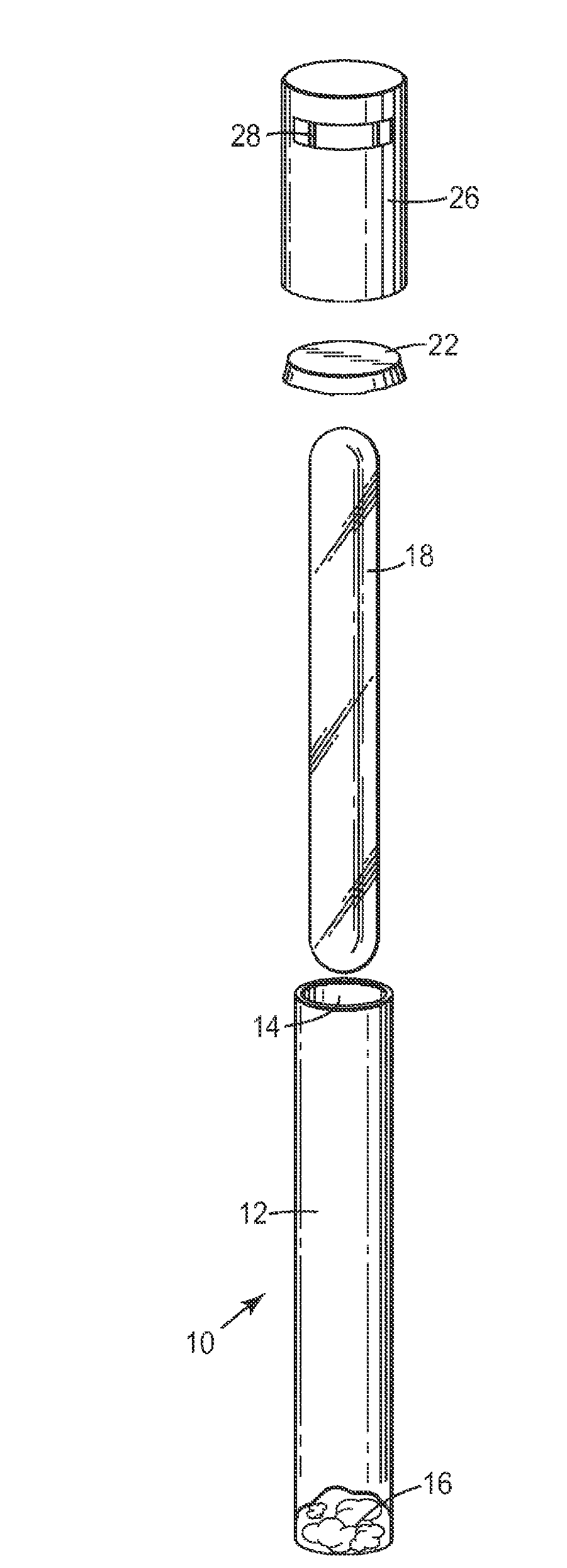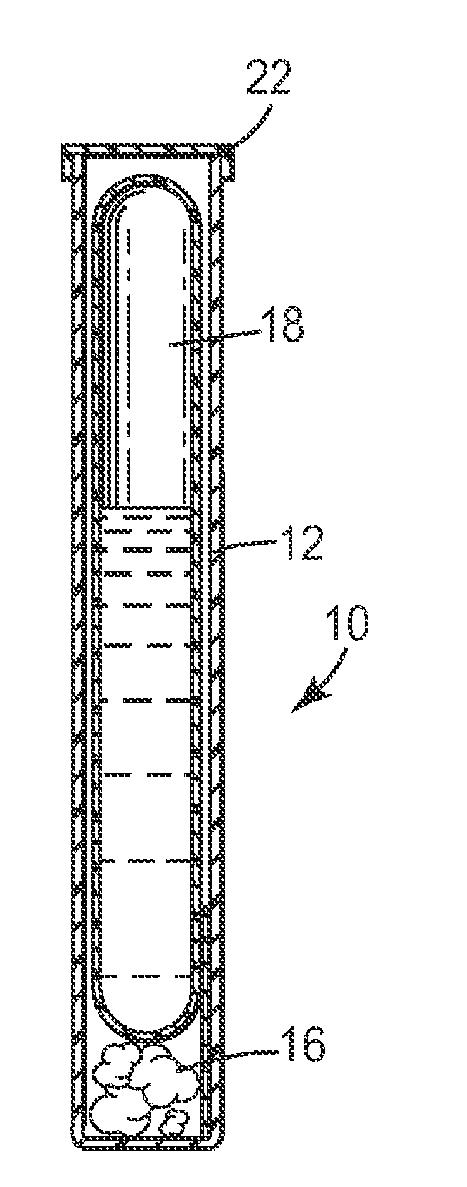Sterilization indicators including a porous carrier and methods
A sterilization indicator, porous carrier technology, used in biochemical equipment and methods, specific-purpose bioreactors/fermenters, biochemical instruments, etc.
- Summary
- Abstract
- Description
- Claims
- Application Information
AI Technical Summary
Problems solved by technology
Method used
Image
Examples
example
[0196] Objects and advantages of this invention are further illustrated by the following examples, but the particular materials and amounts thereof recited in these examples, as well as other conditions and details, should not be construed to unduly limit this invention.
[0197] Materials and methods
[0198] Preparation of spores
[0199] Geobacillus stearothermophilus (ATCC 7953) spores used in all examples were prepared on TSA agar plates. Spores were collected and the pellets were washed three times with deionized water at 4°C. The spore suspension was centrifuged at 8000 revolutions per minute (rpm) for 15 minutes (min), then the volume of the cleaned product was brought to 800 milliliters (mL) by adding sterile deionized water. Measure and record the percent transmission of the spore suspension (λ = 625 nanometers (nm)).
[0200] Spore carrier material
[0201] Fourteen different spore carrier materials were tested. These spore carrier materials are all nonwo...
example 1
[0210] Hydrophobicity - contact angle measurement
[0211] The hydrophobicity of the nonwoven sheet material is determined by water contact angle measurements. The contact angle is a quantitative measure of the wetting of a spore carrier material in sheet form by water. It is defined geometrically as the angle formed by a liquid at a three-phase interface where liquid, gas and solid meet. A contact angle of 180° indicates a completely hydrophobic surface. A contact angle close to 0° indicates a hydrophilic surface. A drop of sessile water in an amount of 10 to 20 microliters (μL) was applied to the surface of each unblended nonwoven sheet material. The hydrophobicity of the nonwoven sheets was determined by water contact angle measurements (Table 2). Based on the contact angle results, the support materials can be divided into two groups. The first group of support materials has a hydrophilic character with a contact angle equal to zero (Paper-591, CRANEGLAS, SX-314 and...
example 2
[0215] Determination of effective fiber diameter (EFD) and compactness (%) of carrier materials
[0216] The pressure drop (ΔP) was measured using a differential pressure flow meter (from TSI Inc., St. Paul MN) at a volumetric air flow rate of 15 liters / minute. For each ΔP measurement, a given basis weight sample of the carrier material (each material processed / blended as described above) was loaded into a plastic tube with an inner diameter of 7 mm, forming a 4 mm high plug of material. One end of the plastic tube was vented to atmospheric pressure and the other to a vacuum pump used to establish a constant volumetric air flow rate through the plug of carrier material. A differential pressure flow meter is located in the path connecting the plastic tubing to the vacuum pump. A scrim with a large opening was used to cover the end of the plastic tubing connected to the pump in order to keep the carrier material inside the tubing during the measurement of ΔΡ. As in C.N. Davi...
PUM
| Property | Measurement | Unit |
|---|---|---|
| diameter | aaaaa | aaaaa |
| diameter | aaaaa | aaaaa |
Abstract
Description
Claims
Application Information
 Login to View More
Login to View More - R&D
- Intellectual Property
- Life Sciences
- Materials
- Tech Scout
- Unparalleled Data Quality
- Higher Quality Content
- 60% Fewer Hallucinations
Browse by: Latest US Patents, China's latest patents, Technical Efficacy Thesaurus, Application Domain, Technology Topic, Popular Technical Reports.
© 2025 PatSnap. All rights reserved.Legal|Privacy policy|Modern Slavery Act Transparency Statement|Sitemap|About US| Contact US: help@patsnap.com



